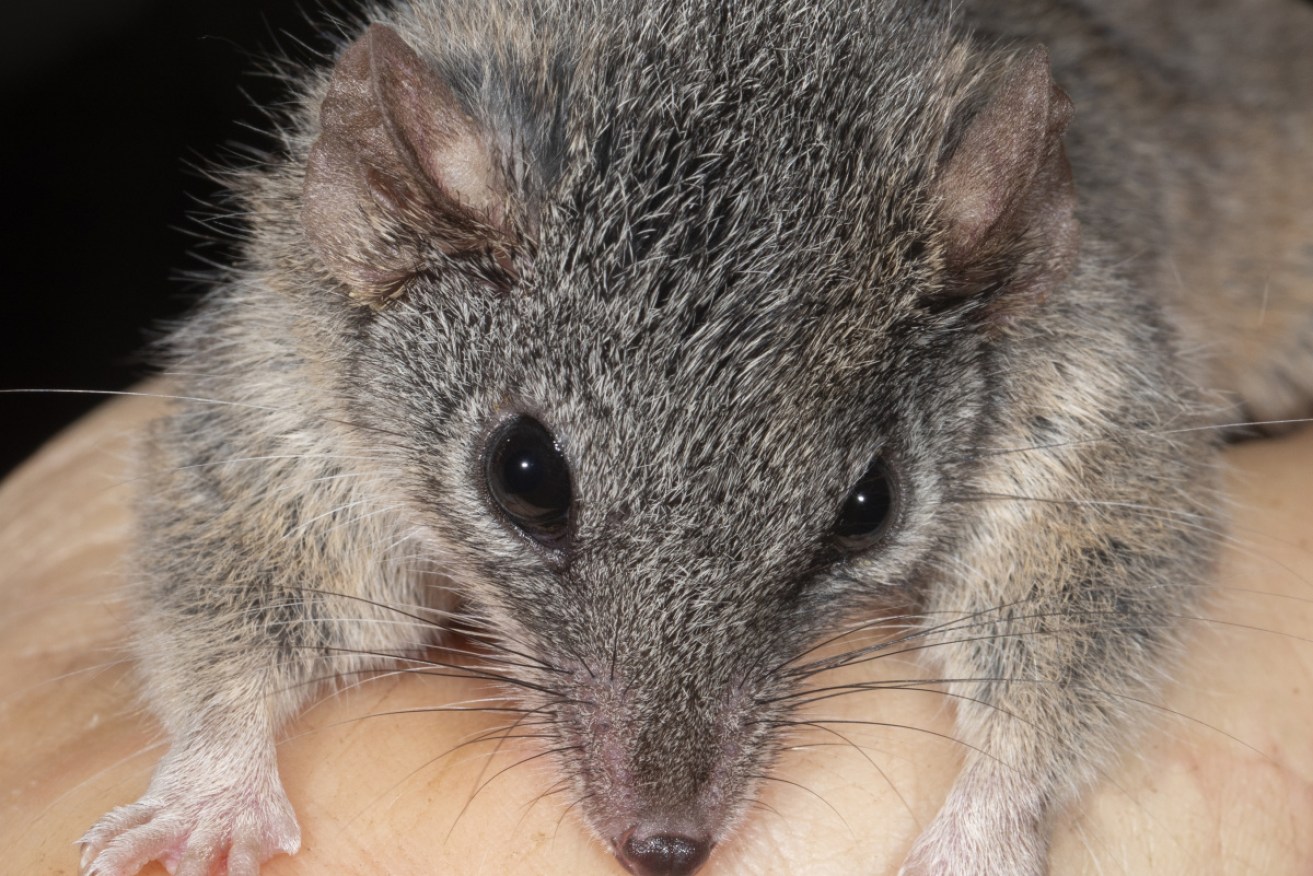Rare marsupial survives fire devastation

A silver-headed antechinus biting the hand of a researcher in Bulburin National Park. Photo: AAP
Scientists have discovered a surviving population of one of Australia’s rarest mammals, the silver-headed antechinus, in a burnt forest south of Gladstone following fires in 2019.
The tiny shrew-like marsupial, whose males die en masse after frenetic mating sessions, was only formally identified as a separate species in 2013, and its numbers were thought to have suffered badly in the fires.
The research funded by the World Wide Fund for Nature Australia trapped 21 of the rare mammals during field work in Bulburin National Park in May and June of 2021.
The silver-headed antechinus is known to live in just three locations, Blackdown Tableland National Park, Kroombit Tops National Park and Bulburin National Park.
Large areas of the animals’ habitat burnt in the fires that destroyed thousands of hectares of Queensland’s rainforest in 2019.
Antechinus expert Dr Andrew Baker and PhD candidate Stephane Batista, both from the Queensland University of Technology, led the search for the silver-headed antechinus in Bulburin National Park.
“Pleasingly, we found 21 individuals across burnt and unburnt habitat which is great, it means they are persisting” said Dr Baker.
Dr Baker is concerned though that the fires have heavily impacted the population of antechinus.
“The megafires demonstrated that even rainforest areas are now vulnerable. With predictions of drying and more intense fires due to climate change, we’re going to have to work hard to save this species,” he said.
“Weeds are growing in some badly burnt areas which could change the vegetation structure and further impact the population. Feral pigs, which trample habitat, are also a problem,” said Dr Baker.
WWF-Australia Head of Healthy Land and Seascapes, Darren Grover, said it was critical that field work continued to assess wildlife populations after the fires.
“It’s understandable the koala became the wildlife symbol of the megafires, but there were many other species impacted that also deserve attention,” Mr Grover said.
Like all 15 species of antechinus, the silver-headed variety is a suicidal reproducer. No male lives past its first birthday.
The males mate with as many females as possible, during a two week period, while females live long enough to raise the offspring and may survive to breed again.
The Australian government named the silver-headed antechinus on a priority list of 20 mammals requiring urgent management intervention following the 2019-20 megafires.
-AAP








